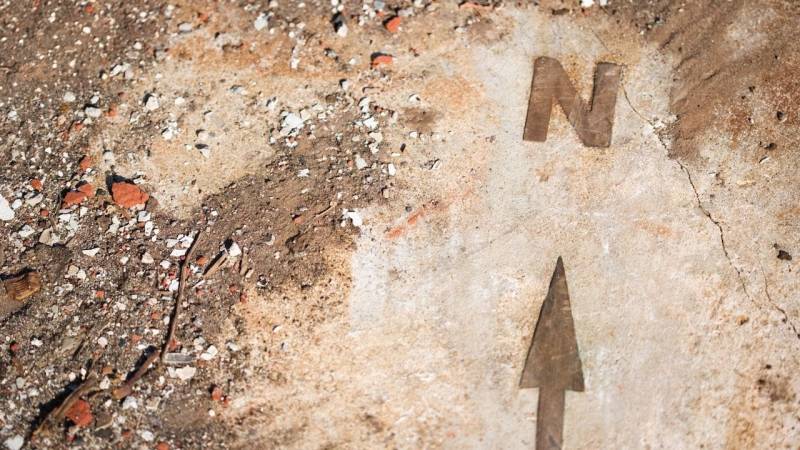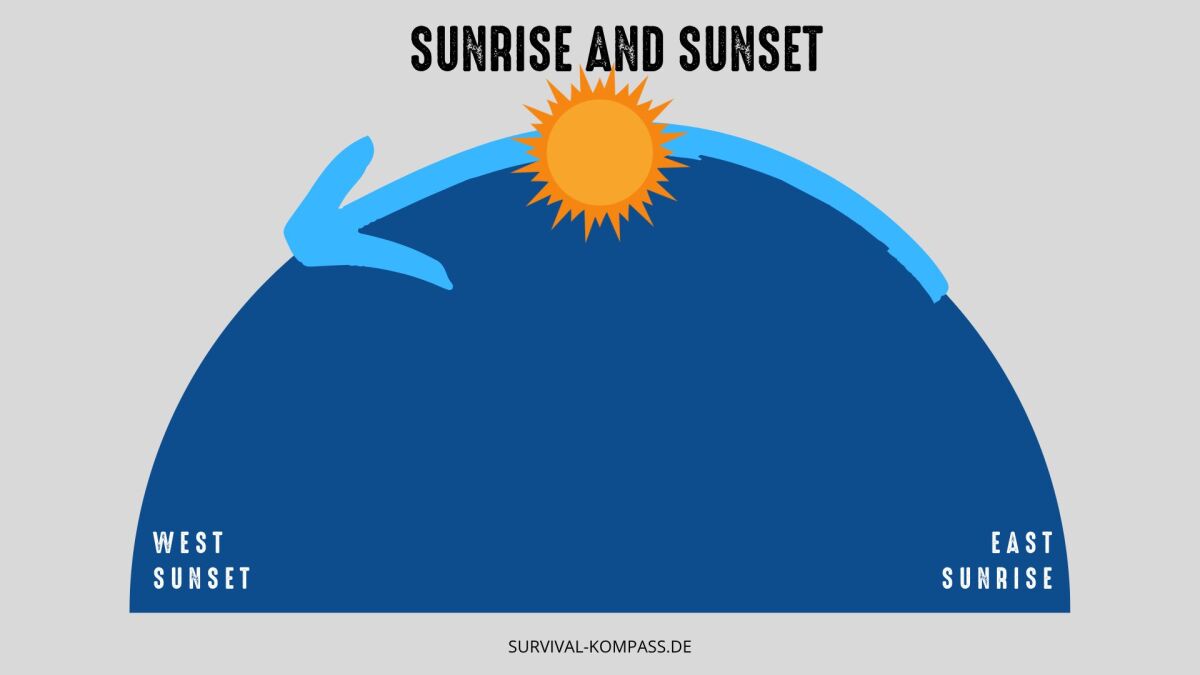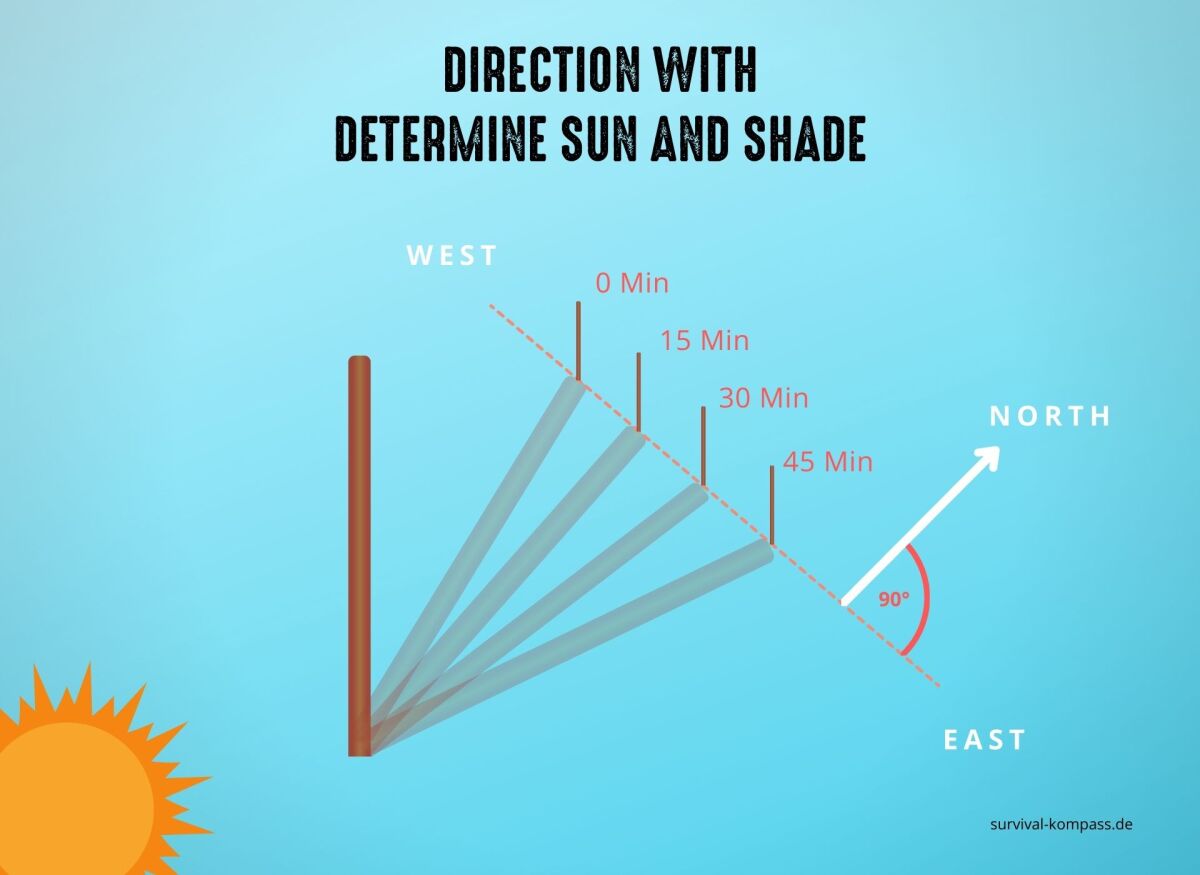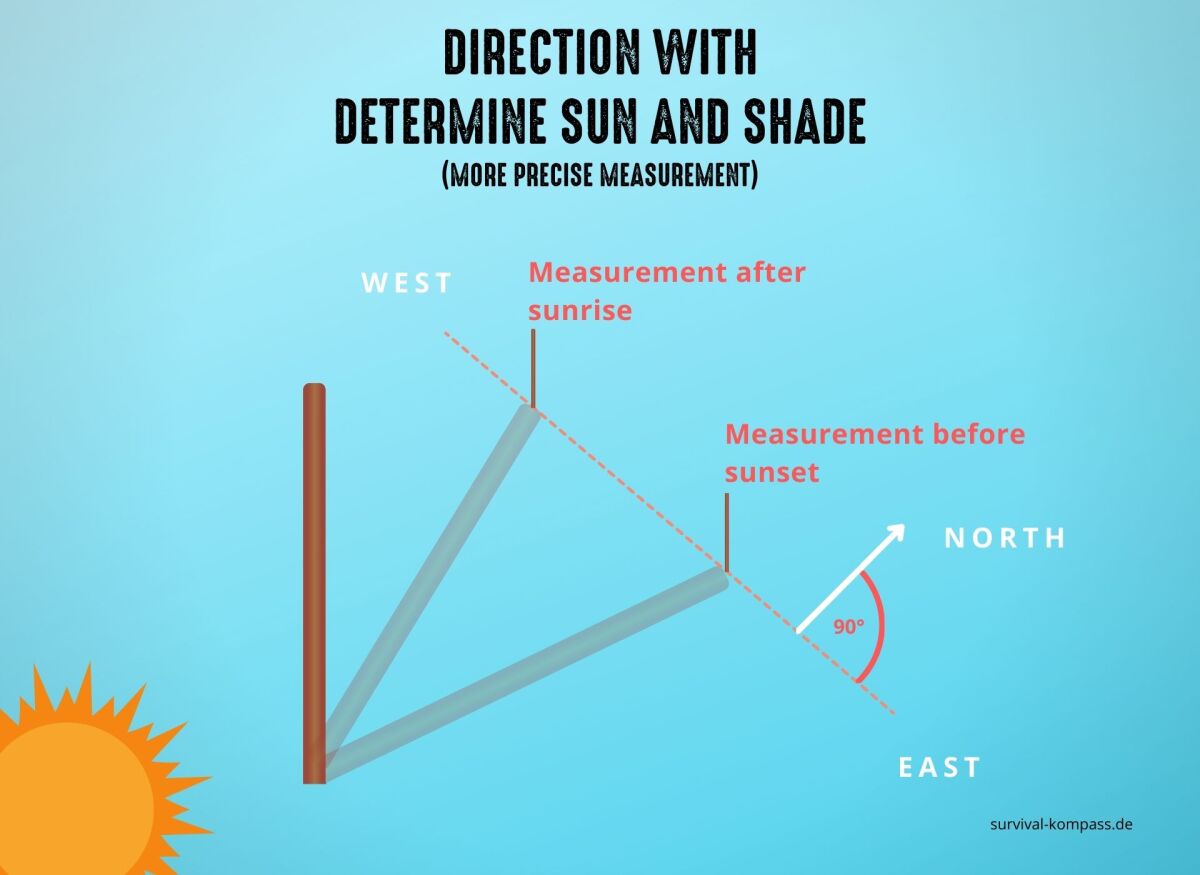
How to determine the cardinal directions using the shadow method (shadow stick method)
👉 The key facts from this guide
- Materials: For the shadow stick method, you need a straight stick of about 60-100 cm in length and some small sticks or stones.
- Setup: You insert the long stick at a 90° angle into the ground and mark the end of the shadow at regular intervals. A line through the markings represents the west-east line.
- Cardinal directions: The drawn line represents the west-east line. North is at a 90° angle to the west-east axis.
- Notes: The method can be inaccurate, with deviations of 20° to 30°. More accurate measurements require more time and a high sun position.
- Limitations: The method does not work in bad weather and in the Southern Hemisphere, north and south must be reversed.
- More accurate measurement: For a more accurate measurement, you can set markings before sunset and after sunrise.
Navigating is one of the basics in Survival.
When you are in a critical situation, you need to know which direction to go.
But what if you don't have a compass and map with you?
To be on the safe side, today you will learn how to determine the cardinal directions based on the sun and its shadow.
I call the determination method the "shadow stick method".
Materials for building the "shadow stick method"
You don't need any technology. Just a few branches and the sun.
- Choose a straight stick that is approximately 60-100 cm long.
- You also require a few small sticks (or stones).
Carve all the sticks so that you can easily put them into the ground.
Most importantly, the sun should be visible and the sky not cloudy.
Without the sun, there is no shadow. And without a shadow, the method won't work.
Construction of the "Shadow Stick Method"
The basic requirement is that you know that the sun rises in the east and sets in the west.
This is an unalterable fact that you work with. As you can see from the graphic, you know exactly what I mean:

Now you can take advantage of this fact by following the sun.
Then you can determine west and east. And once you know just one cardinal direction, you can determine all the others.
Let's go, step by step:
- Find a level spot where the sun is not obstructed
- Insert your long stick (the shadow stick) at a 90° angle into the ground
- Mark the end of the shadow of the shadow stick with a small stick
- Wait 15 minutes and mark the end of the shadow of the shadow stick again
- Wait another 15 minutes and then another 15 minutes, marking the end of the shadow each time
- Draw a straight line through all the markings
You're done! Fantastic. Now let's determine the directions.
Determination of the Cardinal Directions
Now you will determine the cardinal directions.
The drawn line across the markings represents the west-east line (the shadow moves opposite to the sun).
This means that the direction north is at a 90° angle to the west-east axis.
The graphic below illustrates the method:

Instructions for the "shadow stick method"
The method can be inaccurate. There are sometimes deviations of 20° to 30°.
To measure as accurately as possible, the sun must be high in the sky.
Furthermore, you should take at least one hour to take measurements. The longer you take, the more accurate the measurement will be.
Furthermore, keep in mind: On the Southern Hemisphere, you need to swap north and south.
It's also clear that you can't use the "shadow stick" method in bad weather.
How to Measure More Accurately?
As mentioned above, the measurement is more accurate if you take more time.
Optimally, you should set a marker at the end of the shadow before sunset and then set another marker in the morning. Alternatively, you can set a marker after sunrise and before sunset.
This method is very precise and there will be almost no deviations.
The graphic shows you how to do it.

Remember that the direction determined by the shadow stick differs from the magnetic bearing of a compass and also from the north grid on a map. But using the shadow stick correctly will give you the true rotational axis to the north.
Even when the moon is bright enough, you can use the shadow created by the moon in exactly the same way.
Now tell me in the comments, what do you think of the method?
Have you ever tried the "shadow stick method"?
In my ultimate guide "Navigation and Orientation without a Compass", you will also find 11 verified methods.

Sources for the guide
https://de.m.wikihow.com/Die-Himmelsrichtungen-bestimmen
https://adventure.howstuffworks.com/survival/wilderness/true-north2.htm
https://adventure.howstuffworks.com/survival/wilderness/true-north3.htm

Author of the guide
Martin Gebhardt
Hey, I'm Martin. On my blog, you will learn the basics and numerous details about living in the wild. I think survival, bushcraft and the good life in nature are the keys to happiness. Find me here on Instagram or on YouTube. You can find more about my mission on the About Me page.
Was this guide helpful?
40 people found this guide helpful.
5.00 out of 5 points (40 Ratings)
Comments (0)
This post may contain affiliate links. So if you click on the links and make a purchase, I will receive a small commission at no additional cost to you. Click here, to learn more about it.


